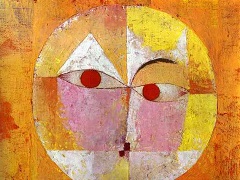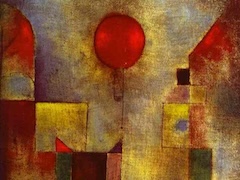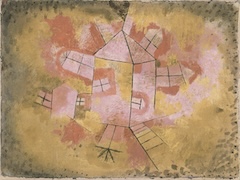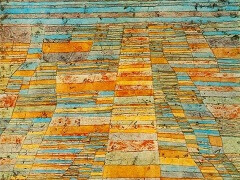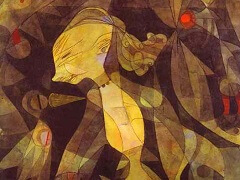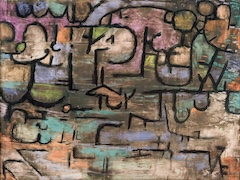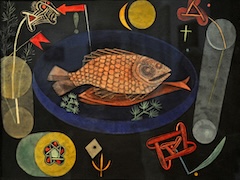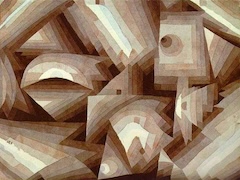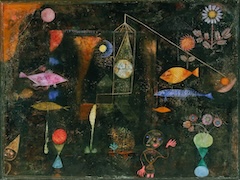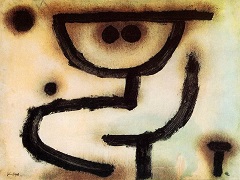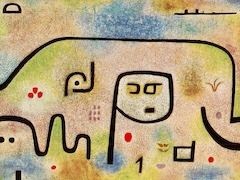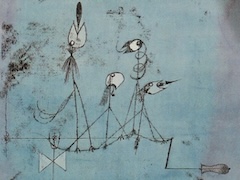Affected Place, 1922, by Paul Klee
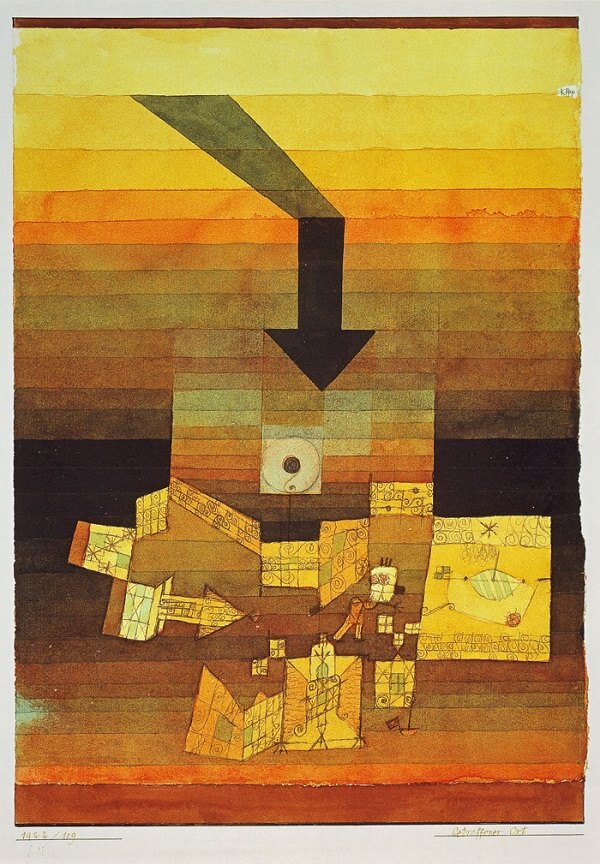
Created in Klee's early Bauhaus years, this piece shows a scene of ambiguous signs and symbols over a background of modulated purples and oranges. The various strips of color hint at a horizon, their horizontal emphasis counteracted only by the boldly painted arrow, which abruptly suggests something as ordinary as a road sign. Like the many gradations of color, the arrow generates movement, compelling the viewer's eye to the center of the picture. The influence on Klee of Cubist still lifes, such as those of Pablo Picasso and Georges Braque, is clearly apparent: Klee suggests a motif painted from nature while also cancelling it, as though to remind us that this is no window but a kind of abstract sign system.
The antagonism between the dividual and individual elements can be seen most clearly in the strip images in which Klee introduced narrative motifs, instead of abstract crossbars, into the structure of the horizontal bands. In the Affected Place, 1922 a collection of decorative forms and figurative signs is threatened by a powerful arrow coming, like a fatal catastrophe, from the top of the painting. "The longer the journey between here and the world beyond is," remarked Klee, "the more perceptible the tragic tension becomes." He further accentuated this impression by the break in the horizontal layers at the arrow's point of impact. He borrowed his plastic means from an observation of nature: "The active part (the line) can attack in two ways: It either divides the form achieved into two parts or goes further and causes a displacement, which in geological terms is called a fault..."
With regard to the static movement, he noted:
The arrow's target is the center of the earth; its trajectory ends on the most favorable terrestrial layer and becomes position. (...) The straight lines going horizontally are abstract notions of the static rules of the second degree (layers and accumulation resulting from the force of gravity)."
With or without the help of the arrow, Klee represents the movement of forms by a progressive series, notably through the elements of horizontal bands. In this work the tension of the event condenses as the bands gather together around the target. According to Klee's definition, rows that shrink while regressing towards the center are mortal. The chromatism is there to reinforce this impression, and the progressive darkening acts as a threatening charge. The luminous yellow of the upper part is engulfed in the black and has its counterpart in the bottom part. The two currents are rushing toward the target. One has the impression that at the junction point of the colored currents, underneath the forms that constitute the decorative bands, and the mysterious and grotesque figures and ships, lies chaos. These forms are "thrown into relief" by the displacement of colored layers.

